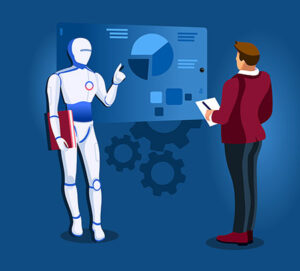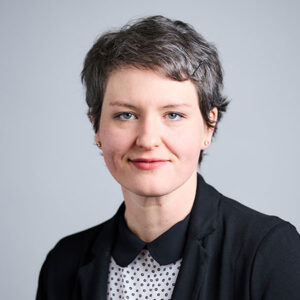Do we alienate people with our jargon-filled language?
By Brienne Musselman
 For a year-and-a-half we’ve relied on virtual education. What we’ve learned about the impact of lighting on our environment has, for the first time, been from the limited vantage point of a chair and a glowing screen. As we hopefully head back into learning together—albeit under the sometimes-harsh glare of convention centers and conference rooms—I wonder if our priorities have changed. Will we see a change in learning about light? Will we see a change in speaker submissions at conferences? Will the personification of lighting and its characteristics help us relate to one another in a way we haven’t before? Based on trends this year in education, I think so.
For a year-and-a-half we’ve relied on virtual education. What we’ve learned about the impact of lighting on our environment has, for the first time, been from the limited vantage point of a chair and a glowing screen. As we hopefully head back into learning together—albeit under the sometimes-harsh glare of convention centers and conference rooms—I wonder if our priorities have changed. Will we see a change in learning about light? Will we see a change in speaker submissions at conferences? Will the personification of lighting and its characteristics help us relate to one another in a way we haven’t before? Based on trends this year in education, I think so.
If you caught David Warfel’s webinar “A Second Language of Light”—or his article on the same topic in the February 2021 issue of LD+A—you might have seen the inundation of comments in praise of developing a more empathetic, accessible way of describing our relationship to light. Advocating for layers of light described as “know more, feel better, focus clearly, make change easier, and do better” instead of the tried-and-true “ambient, accent, task, sparkle,” Warfel brilliantly acknowledges that “lighting speak” works well with our peers, but is otherwise alienating. Understanding lighting is a gift worth sharing with others, but are we as a community equitable and empathetically informative?
Warfel’s webinar—which is tied for first this year in e-learning views (you can still watch it in the archives)—even sparked a discussion about forming an IES committee for the purposes of educating the public utilizing more accessible language about lighting. I have a feeling that Warfel was tapping into something a lot of people didn’t even know they needed to hear.
I hope we are heading into a phase of challenging the way we advocate for ourselves and for others in pursuit of good lighting. I hope the creative ways we’ve learned to address concerns in our immediate environments (lighting among them) will translate to a new way of communicating about lighting. I hope we come up with a better way of talking about human needs.
LOOKING AT CONFERENCE submissions, I think we’re headed in the right direction. Scrolling through our own IES Annual Conference program, I can’t help but recognize the warmth in some of the language used in session topics: placemaking, adaptive, enhancing, friend (in two titles this year), mind, reconnects and context. The isolation of a home office (or dining room table) is, from what I can tell, a driver for an emerging perspective.
I’ll take a moment to admit here that I dislike the term “human-centric” as if it differentiates an approach to electric lighting that isn’t for human vision. It all is. That’s why it was invented. Sometimes it helps, sometimes it hurts, but as long as it is for humans, by humans, to me, it’s human-centric—inclusive of all the ways we damage each other and the environment with poorly motivated lighting schemes. As a phrase, I’ve noticed in marketing materials it tends to lean into territory where we assume one human’s need is the same as the next and that’s a recipe for disaster.
Maybe “inclusive lighting,” “compassionate lighting,” “won’t-make-you-sleepy lighting,” “grandma-will-be-able-to-read-the-menu lighting” are more accurate ways of discussing light that places a specific human need in the top spot.
If I were back in lighting design now, learning what I have over the last year-and-a-half about the way we adapt and communicate about our own environments, I would do things differently. I would start with my communication style, then dive into design concept narratives, building a bank of terms and ideas that are more focused on the experience of light, and less on the light itself. When I think back about the fussiness of the language I have used (and I’ve seen plenty from other designers that fit that description), you’d think I was going out of my way to describe lighting in a way that confused individuals so I had job security.
Instead, thinking of Warfel’s language, I could have proven that light adds value in our daily actions: learning, gathering, doing, feeling, focusing. Lighting designers still fight…for their right… (ah yes, the Beastie Boys) to be on a job sometimes, and technical language is a pretty good way of saying “if you don’t understand me, you need me.” Part of the reason I left design is because I realized: “If you don’t understand me, you need education.”
EDUCATIONAL MATERIAL IS JUST as susceptible to suffocation through technical language. Sometimes, it fits. Sometimes, it doesn’t. My next phase in evaluating and creating education will be more balanced. This, in part, is motivated by my experience on the LightFair Conference Advisory Committee over the past two years. For 2021, we developed a track called “Experiencing Light.”
The idea behind it was that there is space and value in discussing the ways light is experienced beyond how we technically evaluate it (design, watts per sq ft, budget, measured light levels, control protocols, etc.) and that we needed a new type of track to accommodate the trend of submissions that related to light differently than before.
I’m exceptionally excited about the LightFair Conference this year and there are a number of courses that caught my attention. “Light and Mind” with Lindsay Stefans, and “Cultivating Creativity” with Andrea Hartranft and Maureen Moran, both caught my eye for their simplicity in title, but also because both session descriptions lean toward challenging our connection between our personal awareness—mindfulness and creativity—and the practice and observation of lighting. “Using Light to Create Natural Environments and Powerful Human Experiences: A Case Study of Three Aquarium Projects” with Scott Hatton also grabbed my attention. You’re probably catching on as to why, but: “…examples will show how the latest lighting and control technology was used to create a variety of natural environments for the animals and an experiential journey for humans.”
I want to know how this design group learned, then designed, for the human experience. This session description exudes what, in education, I’m always drawn to: someone who knows why they did what they did and why it really matters. Here’s another that drew me in for the same reason: “Lights of Our Memories” with Roberto Corradini, which asks, “What could we learn from studying artists’ eyes and their memorable impressions of the past nights? As lighting designers we have the chance to use our skills to make the difference by creating deep visual experiences during the night.”
MY LAST RECOMMENDATION— “Light + Justice” with Edward Bartholomew and Mark Loeffler—has been adapted for this issue of LD+A has been adapted for the September 2021 issue of LD+A. The seminar description states: “Everyone deserves good light (and darkness). Well-designed, high-quality lighting is a signifier of prosperity and privilege. Poor communities usually suffer poor lighting. Lighting designers will explore the intersection of lighting with social and environmental justice, and its inequitable, adverse impact on marginalized communities….” Though I have never sat front row at LightFair, and at the risk of putting undo pressure on the speakers—if someone saves me a spot up there I just might.
I don’t think our conversations in lighting will get easier. On the contrary. We seem to be heading into a phase of complexity that relies on an openness toward vulnerability to the human experience, and an openness to changing how we communicate. Consistent with this community’s obsessive diligence to change, I hope this year we embrace the trend of leaning into some of the uncomfortable, immeasurable topics about light. The next time Mark Lien brings some of us together with trend observations, maybe communication or language will make the list alongside technology.


